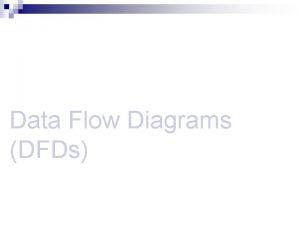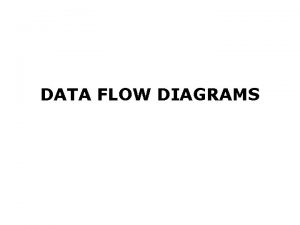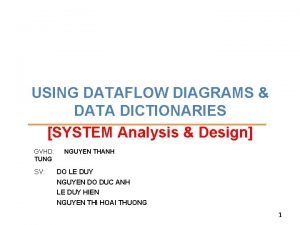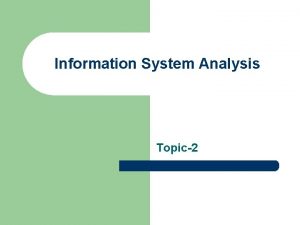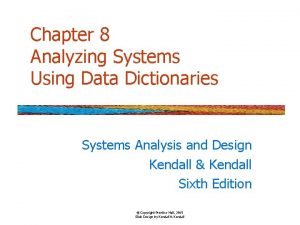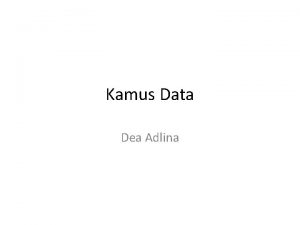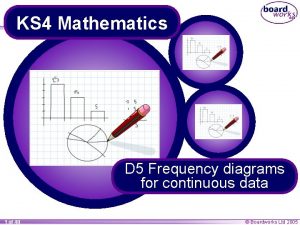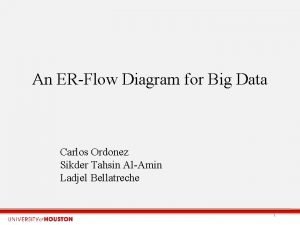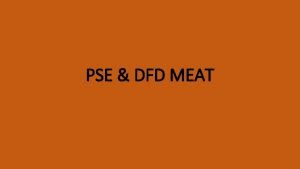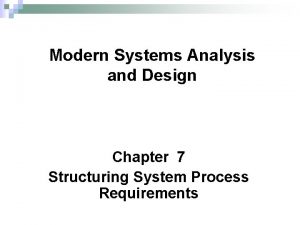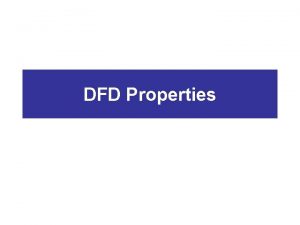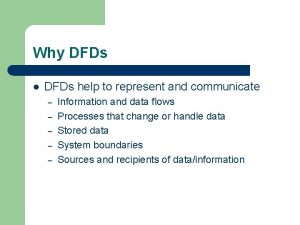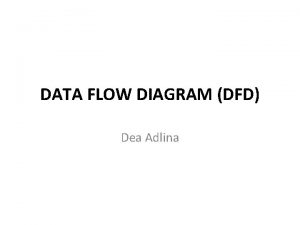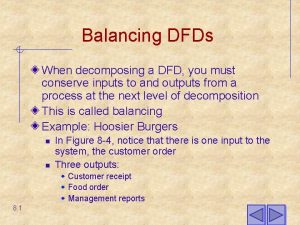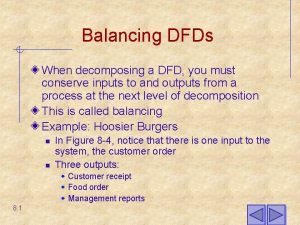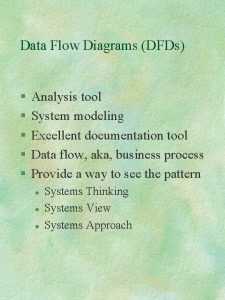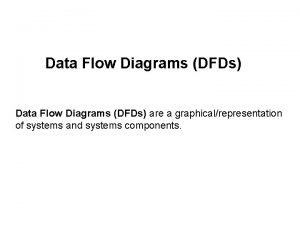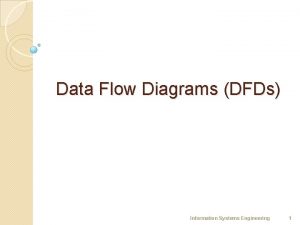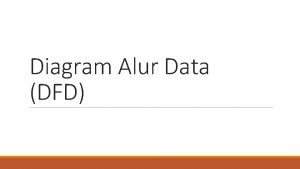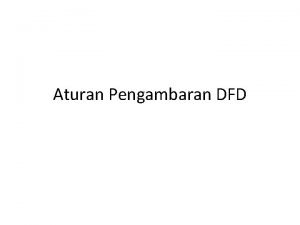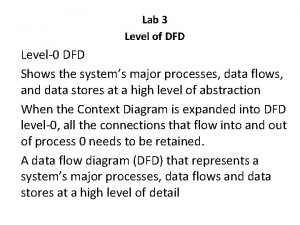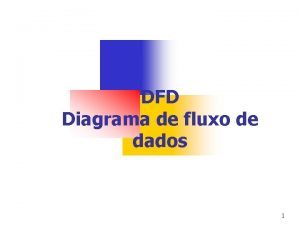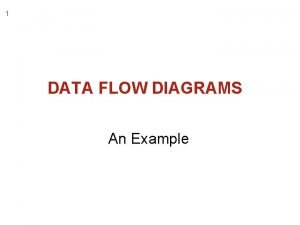Data Flow Diagrams Data Flow Diagrams DFD DFDs

















- Slides: 17

Data Flow Diagrams

Data Flow Diagrams (DFD) • DFDs describe the flow of data or information into and out of a system – what does the system do to the data? • A DFD is a graphic representation of the flow of data or information through a system 3

4 Main Elements • external entity - people or organisations that send data into the system or receive data from the system • process - models what happens to the data i. e. transforms incoming data into outgoing data • data store - represents permanent data that is used by the system • data flow - models the actual flow of the data between the other elements

Notation Data Flow • Data Flow Process box • Process External Entity • External Entity • Data Store D Data Store

Levelled DFDs • Even a small system could have many processes and data flows and DFD could be large and messy – use levelled DFDs - view system at different levels of detail – one overview and many progressively greater detailed views 4

Level 0 - Context Diagram • models system as one process box which represents scope of the system • identifies external entities and related inputs and outputs • Additional notation - system box

Level 1 - overview diagram • gives overview of full system • identifies major processes and data flows between them • identifies data stores that are used by the major processes • boundary of level 1 is the context diagram

Level 2 - detailed diagram • level 1 process is expanded into more detail • each process in level 1 is decomposed to show its constituent processes • boundary of level 2 is the level 1 process

Rules for DFDs • Numbering • Labelling • Balancing 5

Numbering • On level 1 processes are numbered 1, 2, 3… • On level 2 processes are numbered x. 1, x. 2, x. 3… where x is the number of the parent level 1 process • Number is used to uniquely identify process not to represent any order of processing • Data store numbers usually D 1, D 2, D 3. . .

Labelling • Process label - short description of what the process does, e. G. Price order • Data flow label - noun representing the data flowing through it e. G. Customer payment • Data store label - describes the type of data stored • Make labels as meaningful as possible

Balancing and data stores • Balancing – any data flows entering or leaving a parent level must by equivalent to those on the child level • Data stores – data stores that are local to a process need not be included until the process is expanded

Data Flows • Allowed to combine several data flows from lower level diagrams at a higher level under one data flow to reduce clutter • Flows should be labelled except when data to or from a data store consists of all items in the data store

Buy Supplies

Get Items

Reorder supplies

Restock
 Physical data flow diagram
Physical data flow diagram Black hole data flow diagram
Black hole data flow diagram Dr merle martin
Dr merle martin The interaction diagrams, use case diagrams are called as
The interaction diagrams, use case diagrams are called as An activity diagram is a static model.
An activity diagram is a static model. Dfd data dictionary
Dfd data dictionary Data dictionary in dfd
Data dictionary in dfd Data dictionary in dfd
Data dictionary in dfd Kamus data dfd
Kamus data dfd Sankey diagram igcse
Sankey diagram igcse Data flow vs control flow
Data flow vs control flow Control flow and data flow computers
Control flow and data flow computers Formula for frequency density
Formula for frequency density Erflow
Erflow Dfd symbols and uses
Dfd symbols and uses Draw the context level dfd for the safe home software.
Draw the context level dfd for the safe home software. Pse dfd meat
Pse dfd meat Primitive dfd
Primitive dfd
